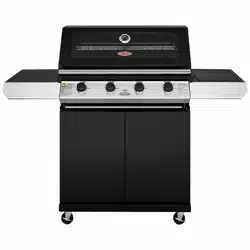Documents: Go to download!
User Manual
- User Manual - (English)
- BMG1241BB - Beefeater - Specifications Sheet - (English)
- Spec Sheet (web) - (English)
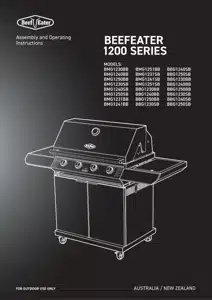
- Know your barbecue
- ASSEMBLING THE BARBECUE
- CONNECTING THE SIDE BURNER
- NATURAL GAS CONVERSION
- USING YOUR BARBECUE
- LOCATING YOUR BARBECUE
- Installing your barbecue
- CLEANING AND STORING YOUR BARBECUE
- Maintenance
- Troubleshooting
Table of contents
User Manual Grill
Know your barbecue
PRODUCT DESCRIPTION


- Rack
- Grill plate
- Vaporiser x2
- Burner x2
- LH side table
- Spill tray
- LH side panel
- Doors
- Door catches
- Door striker plate
- Door catch
- Hotplate
- Burner box and hood
- RH side burner assy
- Side burner hose
- Separation panel
- Brace
- Grommet
- RH side panel
- Base panel
- Caster x2
- Brake caster x2
PRODUCT DIMENSIONS
4 burner mobile barbecue shown

Hood closed

Hood open

ASSEMBLING THE BARBECUE
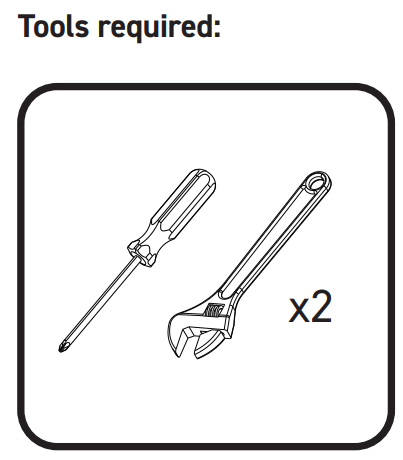
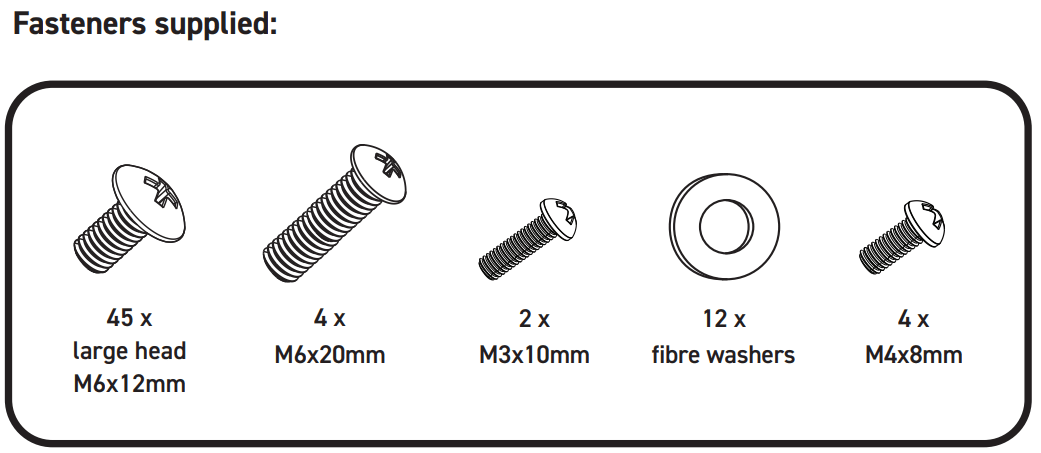



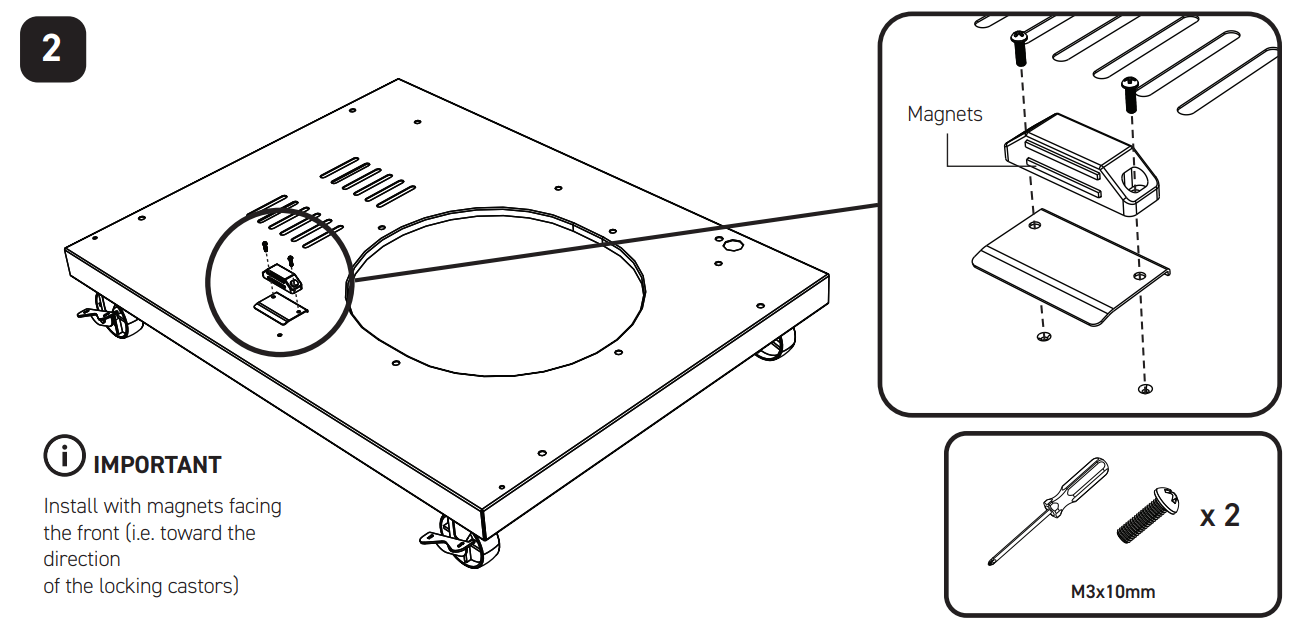
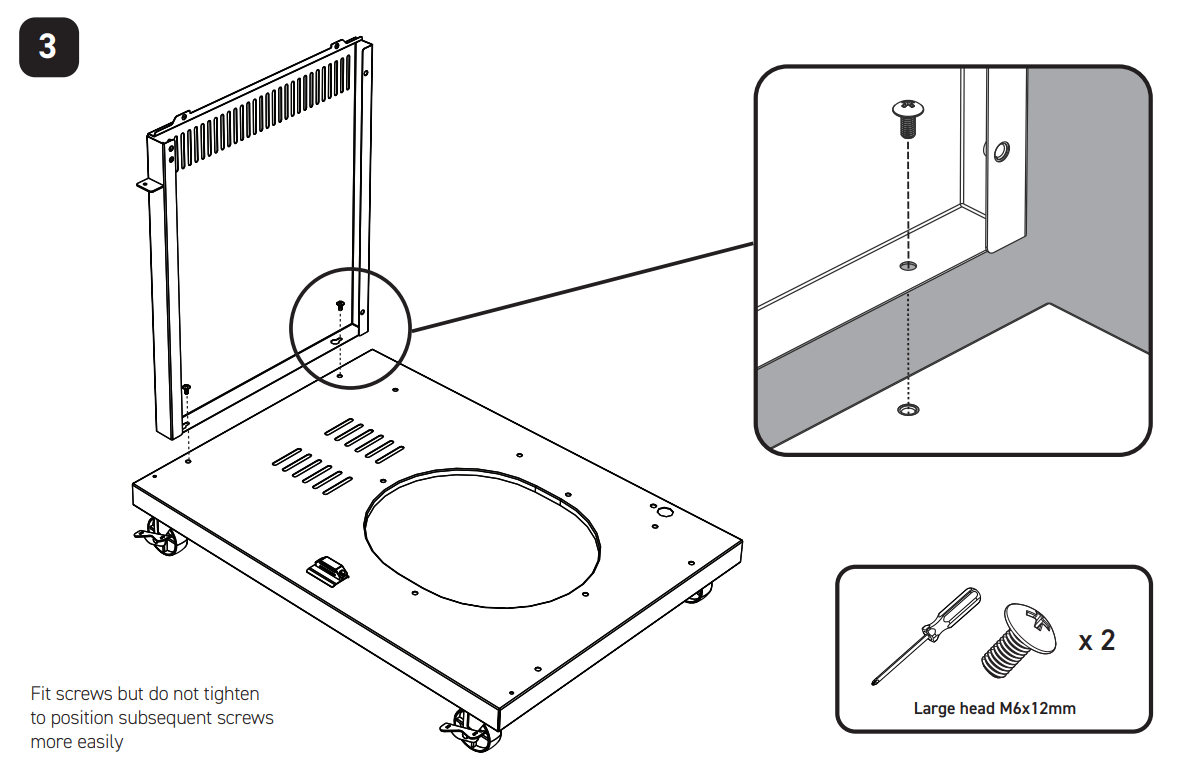

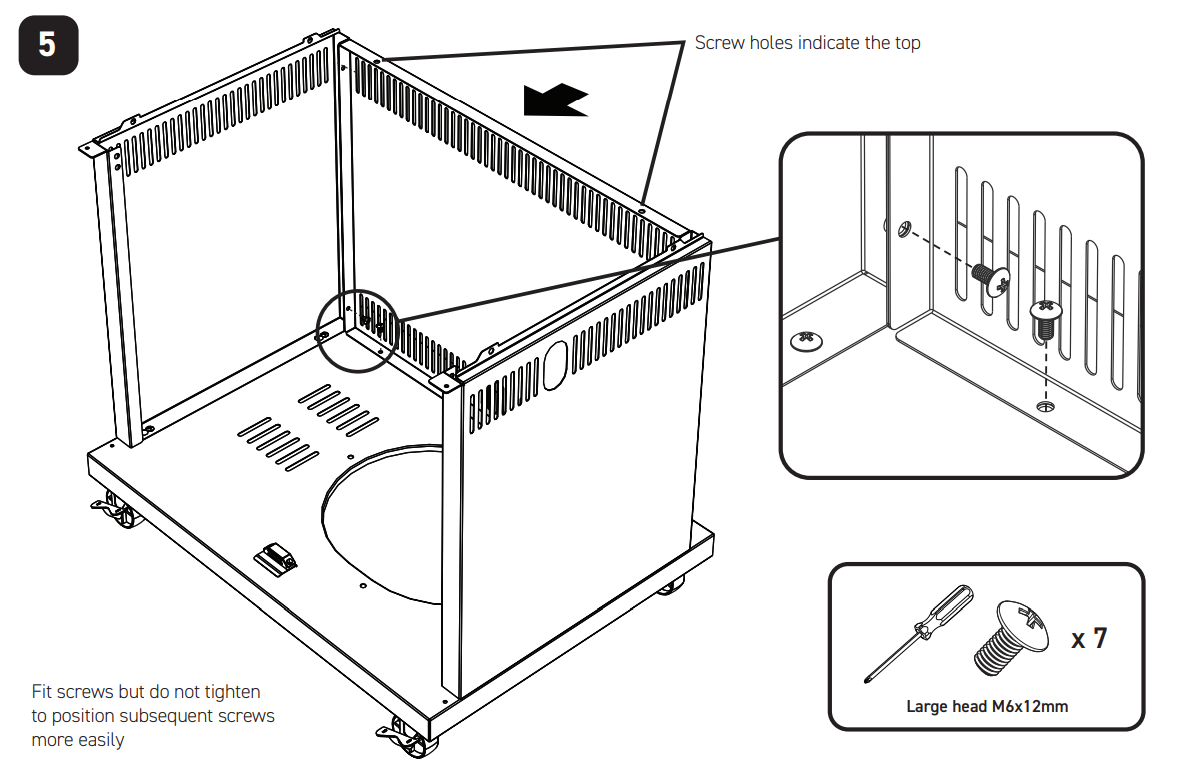

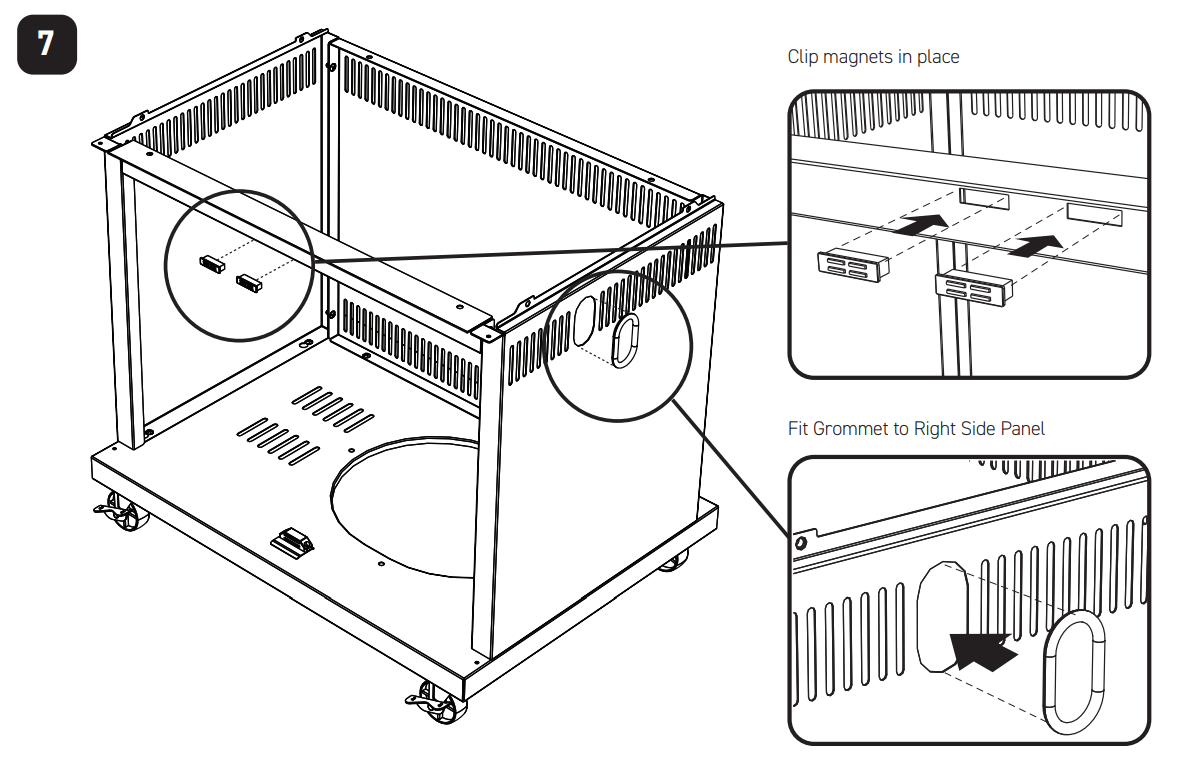

9. First fit lower door pin into the hole on the base assembly. Then depress the upper door pin with your finger, line up with the hole above on the separator panel, and release to allow the pin into the hole.







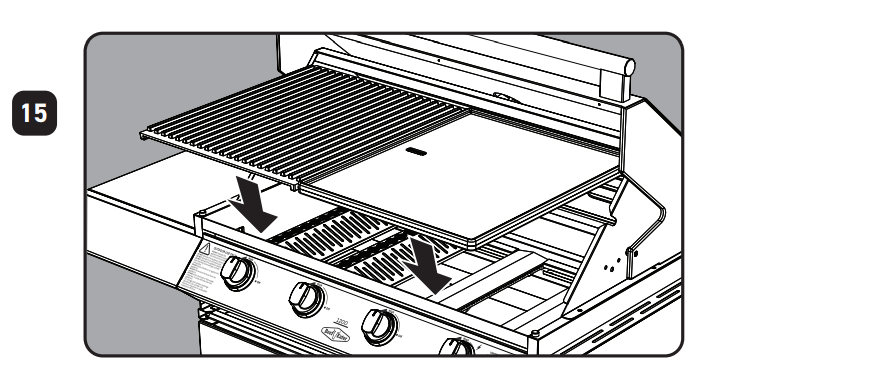
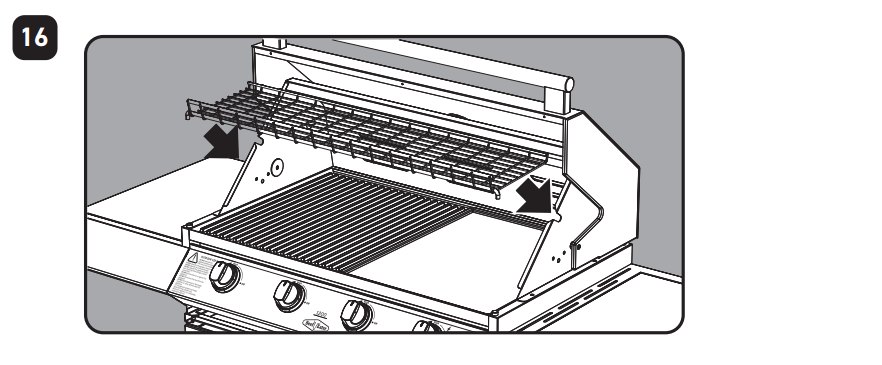
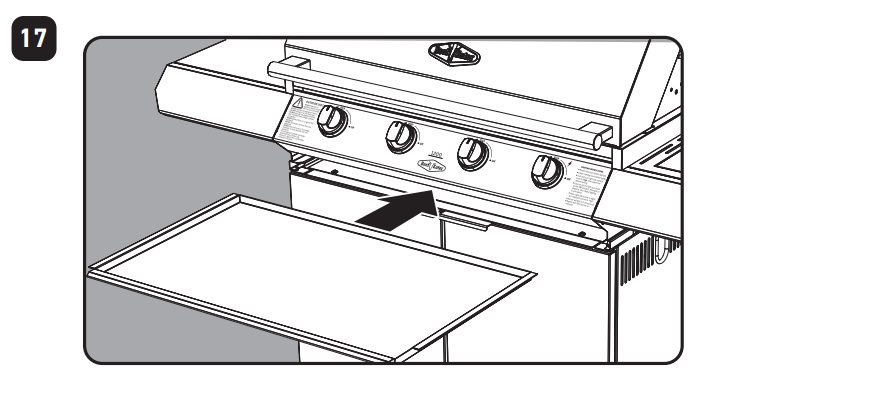
CONNECTING THE SIDE BURNER
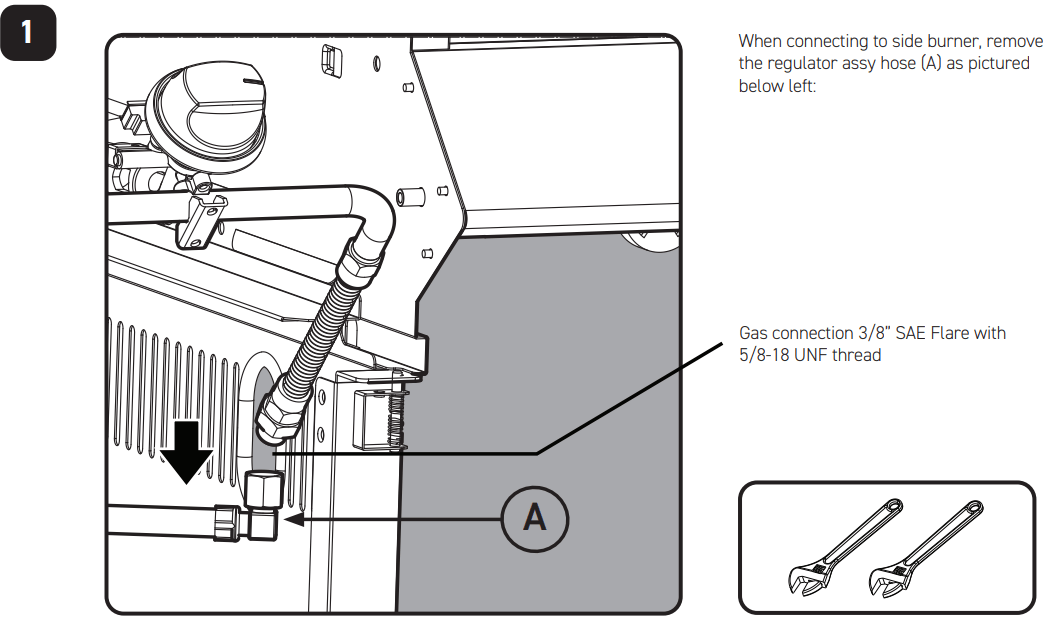



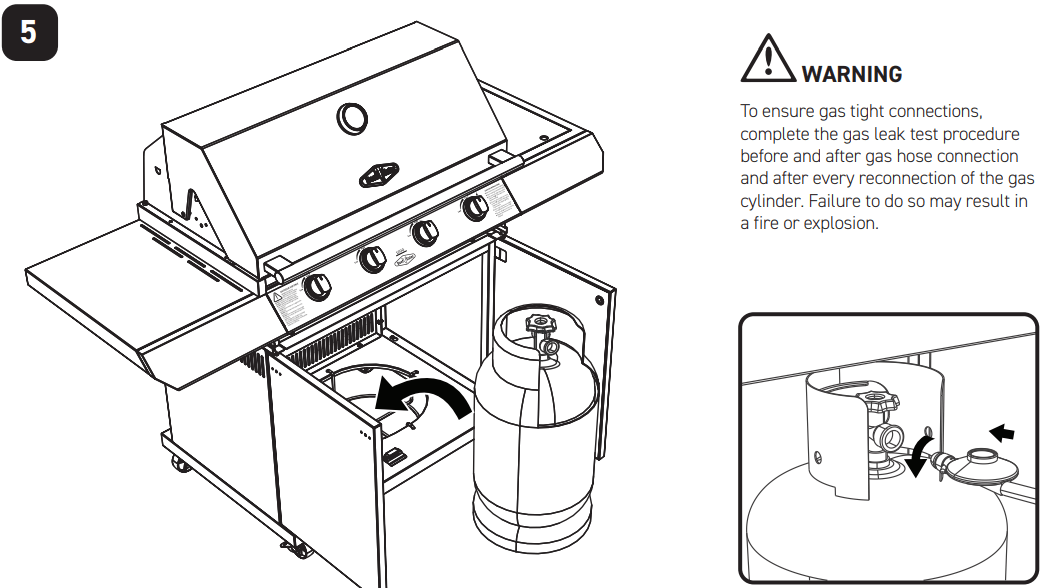
Leak test procedure
- Ensure all gas valves are in the ‘OFF’ position.
- In a small container, mix a solution of water and detergent or soap. • After connection of the hose, turn on the gas supply at the gas bottle.
- Using a brush apply the solution to all gas connection points and look for bubbles forming.
- Bubbling will indicate a leak.
- Turn off the gas supply and re-tighten the joint. Repeat the leak test.
- If the leak persists, turn off the gas at the bottle and contact a licensed gas fitter to correct.
NATURAL GAS CONVERSION
WARNING
Conversion of this unit to natural gas must be carried out by a qualified licensed person and a Certificate of Compliance must be issued to the owner on completion of the installation and conversion. Conversion of this barbecue by unlicensed persons may result in improper functioning of the appliance, injury, property damage and may affect your ability to make a claim under the manufacturer’s warranty.
Converting the unit to natural gas
This barbecue is set up for LPG gas and is labelled accordingly. A natural gas conversion kit is available (Part Number BNG1200) as an accessory if required.
The components in the kit are:
- 6 x brass injectors (natural gas)
- 700mm hose with ½” male pipe thread at one end and 3/8” SAE Flare with 5/8-18 UNF female thread at the other end
- Natural gas regulator with ½” female pipe threads on inlet and outlet
- 1500mm hose with ½” male pipe thread at one end and quick connect at the other end
- 2000mm tether (mobile use only)
- Natural gas sticker
1. Replace ‘gas type’ sticker
Locate LPG gas sticker located on the lower face of the control panel and remove it. Put natural gas sticker in its place
2. Change the injectors
- Remove the burners and grease tray from the appliance to gain access to the injectors
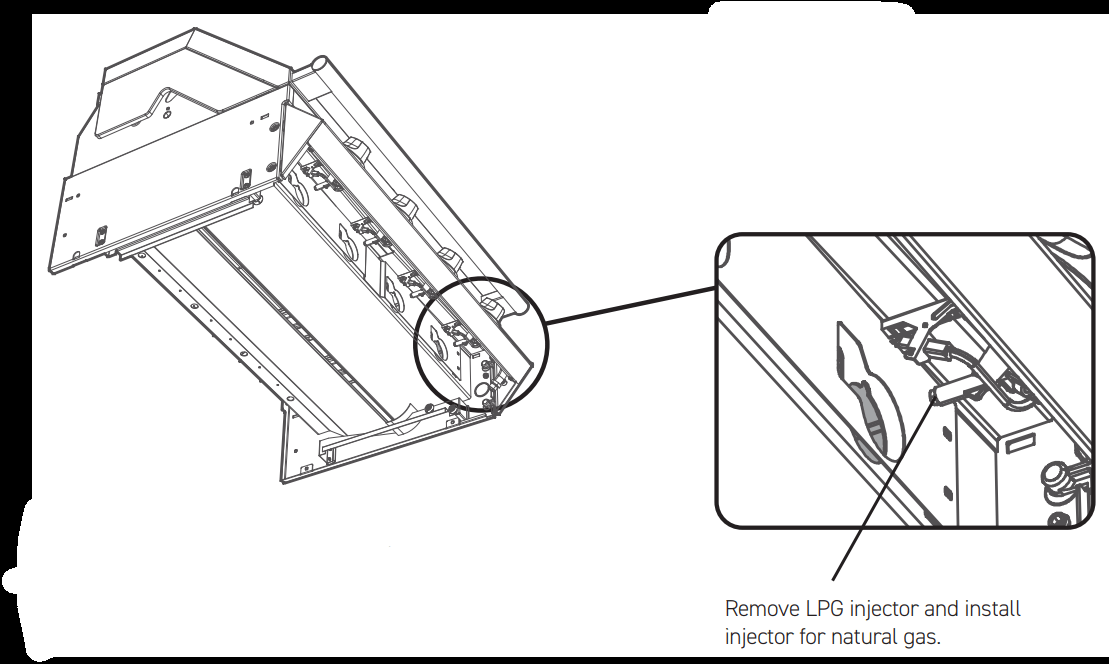
- Unscrew the LPG injectors and replace with natural gas injectors on all valves. All injectors are marked with the orifice size
- Do not overtighten injectors
3. Connecting the appliance to a natural gas supply
- The appliance shall be installed in accordance to AS/ NZS5601 gas installations and any relevant local gas fitting rules.
- Remove the fitted LPG gas bottle hose and regulator from the adaptor mounted to the semi-rigid appliance pipe
- Connect the conversion kit hoses and natural gas regulator. Ensure the flow arrow on the regulator points towards the appliance
- Carry out a leakage check on all connections
4. Adjust the turndown setting on the valve
NOTE: The final step in the conversion of the barbecue to natural gas is the adjustment of the turndown setting.
- Light each burner and rotate the control knob to the lowest setting, then remove the knob from the valve shaft.
- Using a small flat-blade screwdriver adjust the turndown adjustment screw to achieve a small steady flame on the burner.
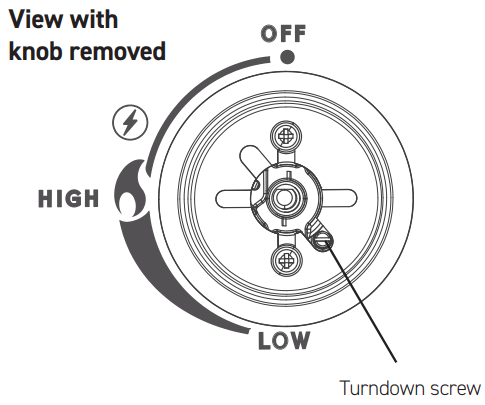
- Replace the knob.
- Recheck the operation of the burner at the maximum and turndown.
- Repeat procedures for all valves.
USING YOUR BARBECUE
Before you light the Barbecue
Perform the following checks:
- Make sure all connections are tight, and leak-tested. Gas regulators fitted with a hand-tightened wheel must be checked to ensure they are secured.
- Check that all control knobs are in the ‘Off’ position, and that gas supply is turned off.
- Ensure that the Hood on the barbecue, and the Lid on the side-burner are open. If lids are closed there is a risk of gas accumulating inside, and creating a dangerous situation.
- The hose and regulator supplied with this barbecue must be used at all times whilst operating this barbecue. Inspect the hose and regulator regularly for cracks or any sign of damage. If there is excessive abrasion or wear, replace only with a genuine BeefEater regulator.
Grease Tray
Neatly line the grease tray with some aluminium foil sheeting to aid in clean up. Cut the foil to shape, and make sure it sits on the bottom of the tray.
Fill the tray with 6mm (1/4”) layer of dry sand or other noncombustible absorbent material to absorb grease. Change the foil and absorbent material regularly to reduce the likelihood of grease tray fire.
Lighting the Barbecue
Ensure the appliance is placed on a flat, level, non-combustible surface.
- Ensure the regulator is connected to the LPG cylinder (See Regulator Connection page 4.), and the hose is not subject to any twisting, and is not close to hot surfaces.
- Verify all joints are spanner tight and check for leaks after turning on gas supply.
- Ensure all knobs are in the ‘Off’ position.
- Ensure cooking plate and grill are in place.
- Open Gas Cylinder valve
NOTE: The barbecue is fitted with a safety feature that prevents the burners from being accidentally turned on. You must push the knob inwards to disengage the lock, and only then start turning it.
- Light each burner by following this procedure:
- Read all instructions before lighting.
- Open Hood before lighting.
- Push in and turn Right-Hand-Side knob counter-clockwise to ‘High’.
- If ignition does not occur, return to ‘Off’ and repeat after 5 minutes.
Check for a clear blue flame with just a tip of yellow.
Once the right-hand-side burner is alight, light each successive burner from right to left.
WARNING: Excess yellow tipping means the combustion is not right, if that is observed, turn the Barbecue burners off, and refer to troubleshooting at the end of this manual.
Do not use more than 2 burners on ‘High’ with the hood closed.
If the burner does not light
Keep the control knob pushed, and return the knob in the clockwise direction to the ‘Off’ position. Wait 5 minutes, and repeat the lighting procedure steps 1 – 4 above again. If after a few attempts you still can not light the burners, contact your retailer before proceeding.
Manual Lighting
Press and turn the right hand control knob anti-clockwise to the ‘High’ position, then light the right hand burner immediately through a hole provided in the middle of the right hand barbecue side panel.
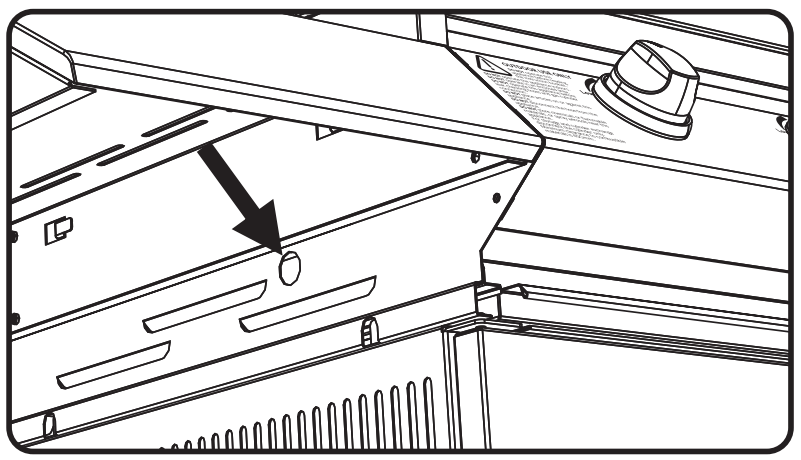
Check for proper burner operation
- Following operating instructions light each burner and check for a clear blue flame with just a tip of yellow. Excess yellow tipping can be adjusted using the screw on the side of the burner. If you are unable to achieve correct operation, consult your dealer.
Preparing the Plate and Grill
- Your barbecue has heavy duty enamelled Cast Iron plate and grill. Enamel is a hard, non-rusting surface which will ensure the long life of your cooking surface.
- The plate and grill are ready to use, but it is recommended to wash them with warm soapy water and a soft cloth, and rinse before use.
- To ensure the longevity of the enamel surface on the Cast Iron plate and grill it is strongly advised to avoid impact with other metal parts and sharp utensils.
To turn off a burner
- Simply turn the knob (without pushing) clockwise to the ‘Off’ position.
After Use
It is a good idea to leave the barbecue on for about 10 minutes after you have finished cooking. This helps to burn away any excess food residues and oil, and makes cleaning easier.
- Be sure to turn off all control knobs and the gas supply.
- Allow the barbecue to cool.
- Clean the drip tray and cooking surfaces. Clean any food spills from the side burner, if one is installed.
- Lower the hood and side burner lid.
- The gas cylinder supply valve must be turned off when the appliance is not in use.
Direct Cooking Method
Commonly used for traditional barbecuing. Place food over the lit grill section. Some flaring may occur, so care must be taken while cooking. Check inside the roasting hood regularly. The direct cooking method is recommended for steaks, chops, sausages, and hamburgers.
Indirect Cooking
Indirect cooking involves little or no heat directly underneath the food. Instead, the food is placed on the grill, the burners below the food are turned off or Low, and burners on either side are used. The hood is closed to trap heat and moisture. With this method, heat circulates around the food, cooking by convection. By trapping the vapour inside your “outdoor oven”, the cooking vapour will fall back on the food on all sides, not just from underneath. The food cooks more evenly, and stays moist in the process. Indirect cooking is similar to using a conventional oven and is recommended for rotisserie cooking, roasts, poultry, casseroles, vegetables and whole fish. When cooking a roast, it is a good idea to use a roast holder and baking dish. Always use a baking dish with a depth greater than 35mm. Shallower trays may fill quickly and overflow, which may cause a fat fire.
Controlling the Burners
The control knob can now be turned to the desired heat setting, Low, High or anywhere in between. The control knob does not need to be pushed in while selecting the heat setting.
Operating the side Side Burner
Do not use oversized cookware or place cookware off-centre over the burner as this can cause high temperatures in control knob and surrounding panels. Cookware should not exceed 200mm in diameter, the use of larger cookware may cause damage to the appliance and is not covered under warranty

LOCATING YOUR BARBECUE
Most importantly, this is an outdoor appliance. Ensure your barbecue is positioned safely away from anything that can catch fire.
Outdoors Use Only
Under no circumstances is this barbecue to be used indoors. This includes garages or any other enclosed area.
Clearance from Combustibles: Ensure your barbecue remains at a distance of at least 45cm (18”) from any combustible material such as wood, gyprock, paper and plants. Do not store combustible materials, gasoline or flammable liquids or vapours within 45cm (18”) of the barbecue.
Adequate Ventilation
Ensure there is adequate ventilation for both the barbecue and cylinder. This is required not only for proper combustion, but also to prevent gas build up. 75mm ventilation and air-intake gap is to be left at rear of the barbecue in fixed installations.
Firm Level Surface
Use your barbecue only on a firm level surface. This barbecue is not designed for recreational vehicles, and shall not be installed on a boat or any marine craft.
Firm Level SurfaceKeep the barbecue protected from adverse weather, including rain and high winds.
Polyvinyl covers are available that have been specially designed for this range of barbecues. Allow clear access to the entire gas supply hose and regulator.
Maintenance Access: When your barbecue is installed, you should be able to access the gas supply line including the gas piping or hose, gas regulator, gas cylinder and any shut off valves.
Partial Enclosures: Many backyards have areas that are partially closed off, such as balconies and pergolas. In some cases, it is hard to decide whether these partially enclosed areas should be classified as indoor areas. This manual provides clear definition of such areas in page 17 for your reference.
Connect the Regulator to the gas Cylinder
WARNING: Verify ‘Gas Type’ label & data plate attached to side of barbecue is correct for the gas you are about to connect to.
The hose and regulator is connected to the barbecue and leak tested at factory. Do not disassemble unnecessarily.
- Make sure burner valves are in the ‘Off’ position.
- Screw regulator side to the cylinder, and hand-tighten. See more details on page 4.
NOTE: Do not modify this appliance. Any deviation from the factory settings could result in a safety hazard.
- If moving the barbecue from one place to another, never drag the cylinder behind. Disconnect the cylinder first, move, and re-connect once reached the new location.
- For storage and cylinder exchange, disconnect hose at the cylinder only, do not disconnect hose from the appliance.
- If you have purchased a trolley with a Side-Burner, please refer to Trolley instruction book for correct connection of the Side-Burner to the gas supply.
Partial Enclosures (Australia Only)
This appliance shall only be used in an above ground, open air situation with natural ventilation, without stagnant areas, where gas leakage and products of combustion are rapidly dispersed by wind and natural convection. Any enclosure in which the appliance is used shall comply with one of the following:
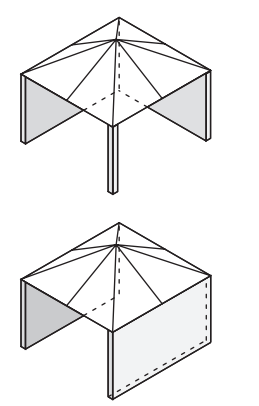
Within a partial enclosure that includes an overhead cover and no more than two walls.

Within a partial enclosure that includes an overhead cover and more than two walls, the following shall apply:
- At least 25% of the total wall area is completely open; and
- at least 30% of the remaining wall area is open and unrestricted.
In the case of balconies, at least 20% of the total of the side, back and front wall areas shall be and remain open and unrestricted.

Any enclosure with walls on all sides, but at least one permanent opening at ground level, and no overhead cover.
Before proceeding, you need to establish the gas type which your barbecue will run on, and the style of installation you need.
Natural Gas or LPG/Propane.
Before beginning installation or assembly, check that the gas type which the barbecue is designed for is correct for the gas available to you. In most countries the choices are natural gas or LPG/propane. You will find the gas type label on the side of your barbecue. If your barbecue uses the incorrect gas type, or if you are unsure, consult your dealer before going any further. Using the wrong type of gas for a barbecue is extremely dangerous.
Natural Gas Conversion
Most newly purchased barbecues are made for LPG/propane. A natural gas conversion kit is available to allow your barbecue to run on Natural Gas. This kit includes all parts required for installation.
Installing your barbecue
1200 SERIES BUILT-IN BBQ INSTRUCTIONS
To suit sizes: 3b, 4b and 5b


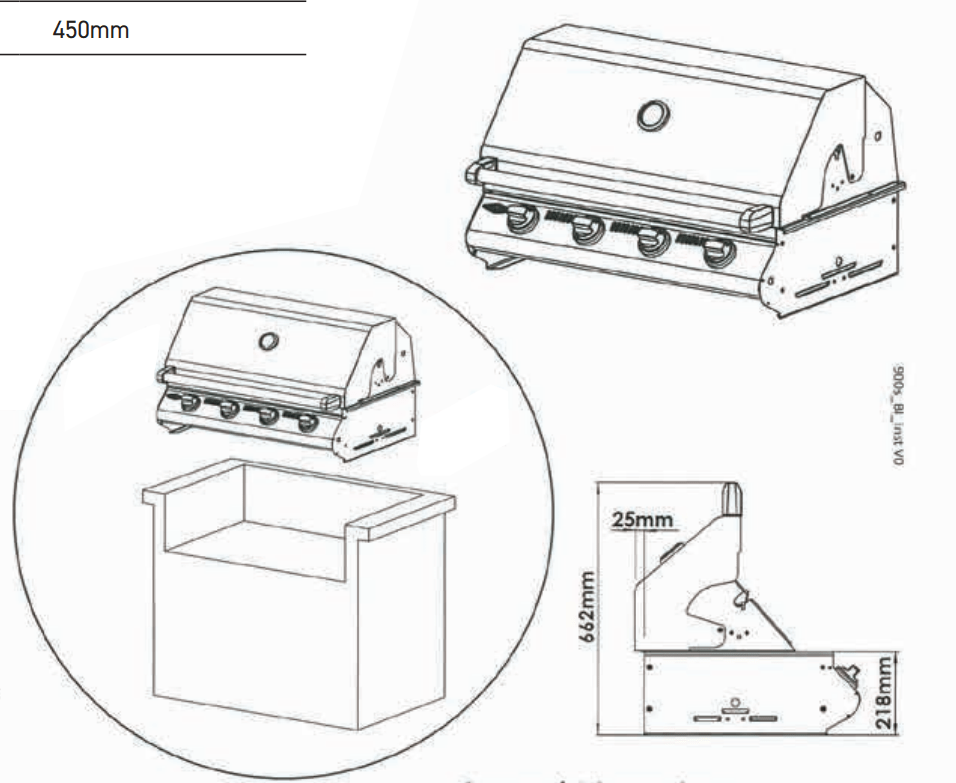
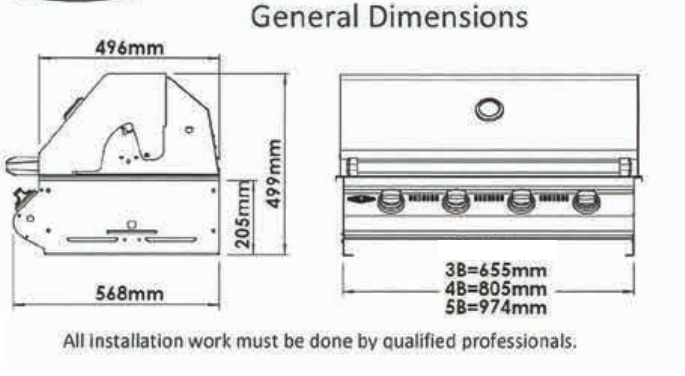
General Requirements
We recommend that this installation be done in a masonry structure and carried out by a professional tradesperson. Other non-combustible material such as Hardiplank, Villaboard with metal studs may also be used.
This appliance must not be installed under or on any combustible material. Minimum clearance from combustible construction materials to all sides of the appliance is 450mm (18”).
Warning: Contact your local municipality for any building codes regulating the installation of outdoor barbecue appliances. Outdoor installations must conform to local codes or, in the absence of local codes, with:
- USA: National Fuel Gas Code, ANSI Z223.1/NFPA 54
- CAN: B149.1 Natural Gas & Propane Installation Code.
- AUST: Australian Standards Code AS: 5601
as well as the requirements of any local council, gas, electricity authority or other statutory regulation.
The Barbecue Cavity Your barbecue has been designed to sit into a cavity or cutout rather than be placed directly onto a flat surface. It is important that the dimensions of the cavity conform exactly to those listed on page 18. This will ensure the barbecue sits correctly in the cavity, and that the barbecue has sufficient ventilation to operate efficiently and safely. The dimensions of the construction also provide approximately 75mm behind the rear of the barbecue to allow the hood to open freely. In creating the cavity, you should ensure that you have convenient access to the gas connection point and associated hardware: • If the gas for your barbecue is supplied by a portable gas bottle, you will need access to the gas connection point, the gas hose and the gas cylinder at all times. • If the gas for your barbecue is supplied by a fixed piped gas supply (either natural gas or 45kg LPG cylinders), you will need access to the gas connection point, the piping and the shutoff valve.
The Cylinder Compartment
If the gas for your barbecue is to be supplied by a portable LPG/ propane cylinder, you will need to ensure that adequate provision is made to house the cylinder safely. The following must be adhered to:
- Keep out of heat: The cylinder and hose must be sheltered from the sun’s direct heat. The flexible PVC hose assembly supplied must not be exposed to temperatures in excess of 60°C (140°F). DO NOT allow the hose to come in contact with the hot surface of the barbecue body.
- Keep cylinder upright: The cylinder must be housed securely. It must remain upright at all times. It can be either attached to a firm vertical wall by a cylinder bracket, or stored on a firm level base.
- Requirements for cylinder base: If the cylinder is to be stored on a flat base, the base must be made from non-combustible material. Soil or grass is not an appropriate surface. Ensure there is adequate drainage, and that water cannot collect around the cylinder.
- Requirements for cylinder compartment: Where the cylinder is to be kept inside an enclosure, you must ensure there is 200 square centimetres of open ventilation at each of the top and the bottom of the enclosure, for each cylinder stored in it. This prevents leaking gas from building up in a confined space. Gas vapour is highly explosive and can cause serious bodily injury or damage to property if allowed to accumulate in a confined space and ignited.
Lower The Barbecue Into Position
When lowering the barbecue onto the brickwork, do not push the barbecue back as far as it will go. Ensure there is at least 40mm clearance behind the rear of the barbecue to allow for proper ventilation.
CLEANING AND STORING YOUR BARBECUE
Cleaning Vitreous Enamel Surfaces and Barbecue Control Panel
- Although porcelain enamel will keep its lustrous finish even under adverse conditions, it still needs regular cleaning. After the appliance has been used, wash down the surfaces with hot soapy water. Caustic cleaners should be avoided. For barbecues near the ocean or salt-water environment, more frequent cleaning and servicing should be conducted. Wash regularly, rinse and then dry before covering. (In a salt water or marine environment, more rapid deterioration can be expected which is not covered by warranty).
- The cleaning and care instructions are essential for the proper functioning and operation of your appliance over time. Failure to adhere to these care instructions may affect your ability to make a claim under the manufacturer’s warranty.
Cleaning Plates and Grills
Many food acids, marinades, juices and sauces contain highly acidic elements that will slowly attack the surface of the plates and grills if not removed after cooking.
- After use, remove all solid material from the cooking surfaces using a brass bristle brush or plastic scourer. Brushes specifically designed for this purpose can be purchased from your BeefEater retailer. Wipe off remaining residue with a paper towel.
- Gently wash the surface of the grills with a soft sponge and a solution of hot water and a mild dishwashing liquid. Do not use highly caustic, harsh or abrasive chemical cleaners to clean the cooking grills. Always check the manufacturer’s recommendations for the cleaner prior to use.
- Coat the grills with a layer of cooking oil. This will help protect the surfaces between uses.
- For porcelain enamel coated cooking surfaces, do not use any metal tools to clean the surface. Use only a brass bristle wire brush to remove hard deposits.
Do not clean the cooking surfaces in a dishwashing machine. For hard deposits and heavy grease, do not use steel wool or metal scrapers. Use concentrated detergent or domestic cleaning powders.
Cleaning The Drip Tray
Never remove the grease tray while the barbecue is hot. Always remove and clean the grease tray after the unit has cooled down.
Replace aluminium foil on main drip tray (if used) and clean both waste trays at regular intervals to prevent grease buildup, which could result in a grease fire and void the barbecue warranty.
Cleaning The Burners
- Check main opening, throat and venturi to each burner regularly for insect nests (eg. wasp, ants or spiders). Nests are dangerous and must be cleaned out thoroughly.
- Remove burners periodically and scrub clean with soapy water and a wire brush making sure that the ports are free of obstructions.
Replace burners in the correct position and dry by lighting each one to avoid subsequent corrosion.
A clogged burner can lead to a fire beneath the grill.

Storing Your Barbecue
- When storing barbecue for extended periods, be certain all controls and cylinder valves are turned off. If storing the barbecue indoors remove gas cylinder and store the cylinder in a ventilated area outdoors.
- Gas cylinders must be stored outdoors, out of reach of children and must not be stored in a building, garage or any other enclosed area.
- The barbecue should be covered when not in use. eg a polyester or vinyl barbecue cover. Frequently check and tighten all nuts and bolts on the barbecue and trolley
- The gas cylinder supply valve must be turned off when the appliance is not in use.
WARNING
- Note: For storage and cylinder exchange, disconnect hose at the cylinder only, do not disconnect hose from appliance.
- Please note that environmental conditions need to be taken into account with regards to the maintenance required on your product. In particular units installed in humid climates or seaside locations will be more susceptible to surface corrosion/ discolouration over time. In these conditions Electrolux strongly recommends cleaning and drying your barbecue after every use and covering it when not in use to minimise exposure to the elements.
Maintenance
This appliance should be checked and serviced by an authorised service person every 2 years to ensure the appliance remains in a safe operating condition. (These services are not covered by warranty).Replacement parts are available from your authorised BeefEater Dealer.
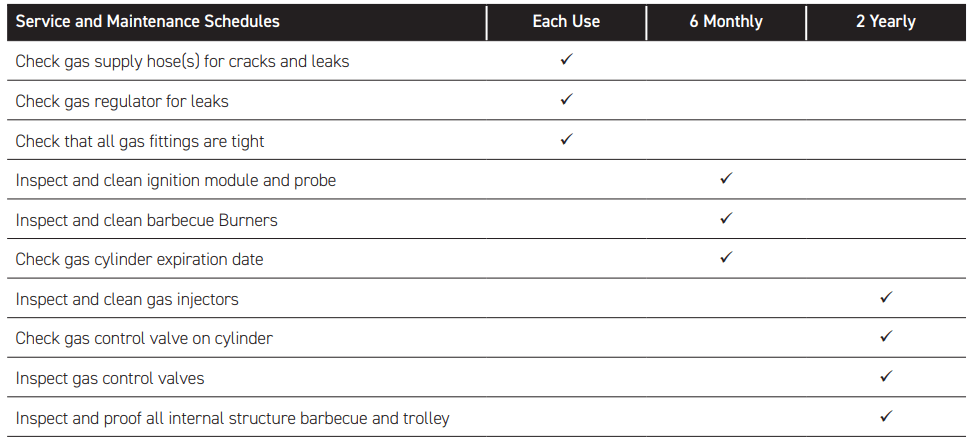
Troubleshooting
| Condition | Possible Cause | Solution |
| Flame goes out while in use | Empty gas cylinder | Replace cylinder |
| Air mixed in hoses | Re-ignite and allow operating for a short while, till clears out | |
| Blockage | Seek professional assistance | |
| Ignition failure | Gas cylinder valve close | Turn off knob button, then open the cylinder valve |
| Air mixed in the hoses | Re-ignite and allow operating for a short while, till clears out | |
| Rubber hose wrapped, deformed Or pinch | Foul smell of gas | |
| Spark escapin | Ensure the spark probe is in Place, not deformed, clean | |
| No spark | Seek professional assistance | |
| Foul smell of gas | Damage to hose | Turn cylinder valve off, replace Hose |
| Leakage | Leak-test, and tighten where required. If leakage can’t be rectified, cease using appliance, and seek professional assistance | |
| Burner went off | Shut off valves, wait for 5 minutes and reignite | |
| Incorrect combustion | Seek professional assistance | |
| Flame appear to separate off the Burner or flame burns with noise | Blockage of burner port | Clean the burner thoroughly. If problem persists, seek Professional assistance |
| Yellow tipping in flame | Air/gas mixture screw in burner Incorrect | Try to open screw to remove Yellow. If not changing, seek Professional assistance |
See other models: BMG1241SB BMG1251BB BMG1251SB BRC214SA BOK44WG
